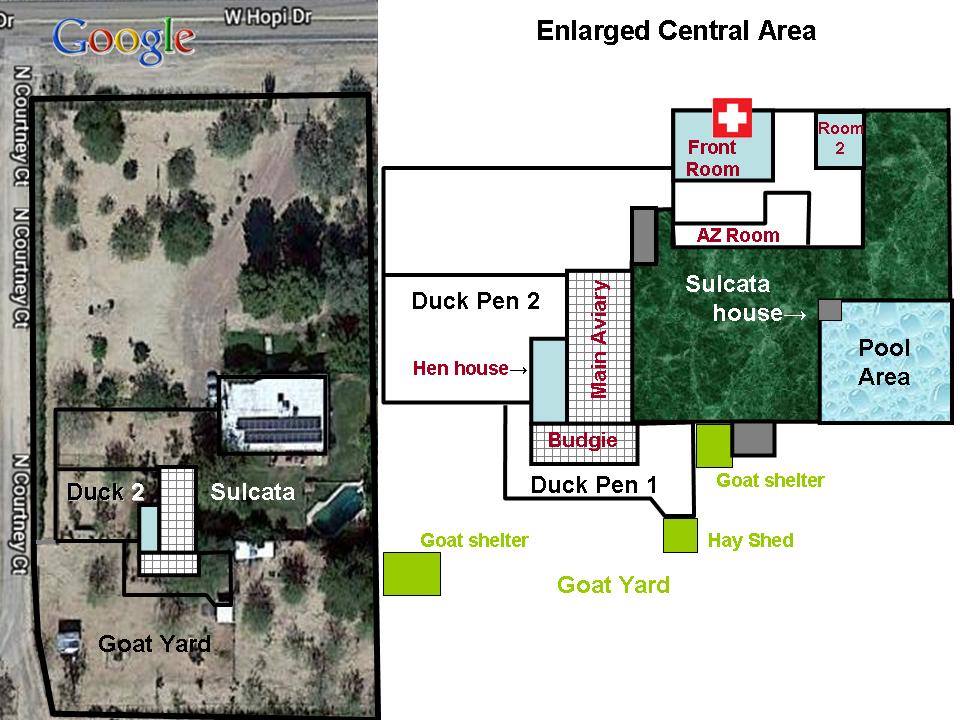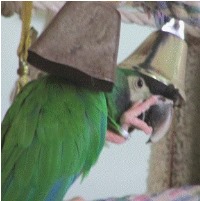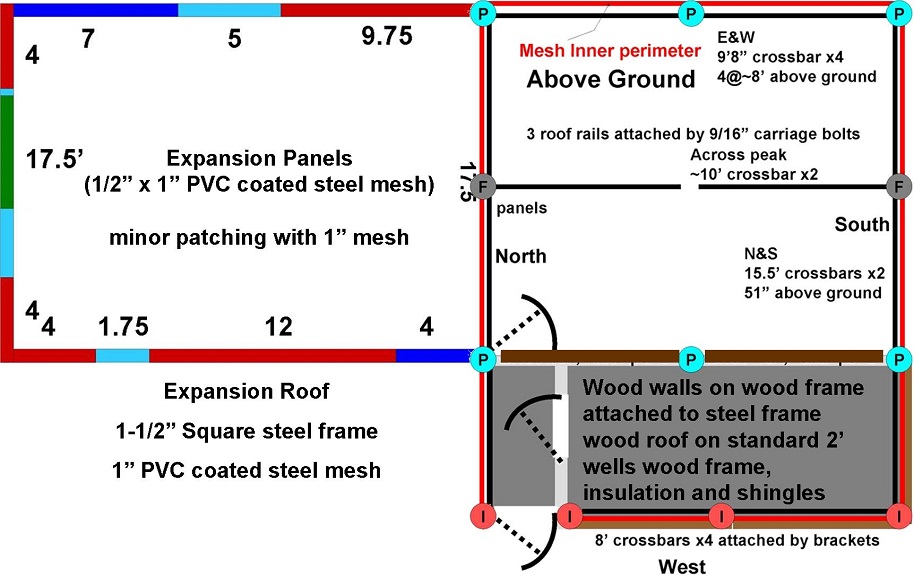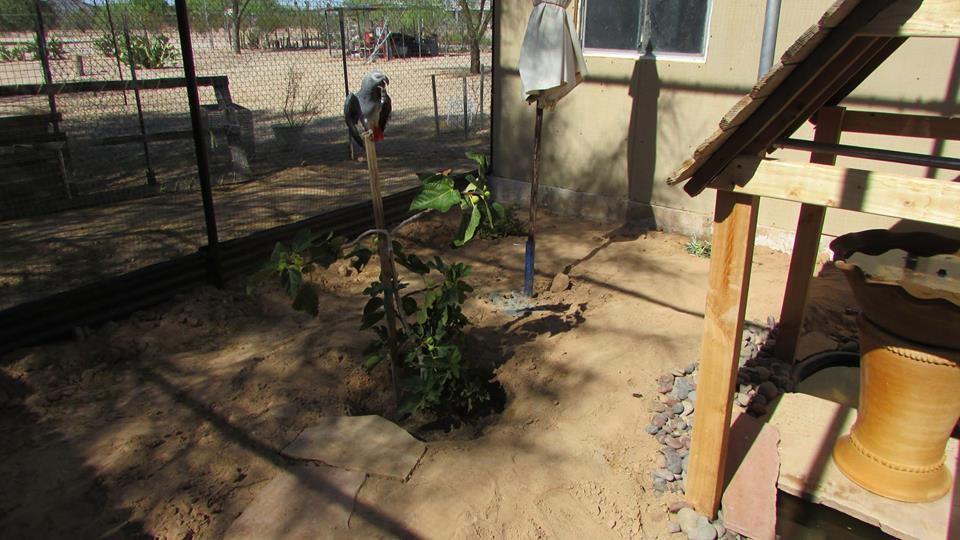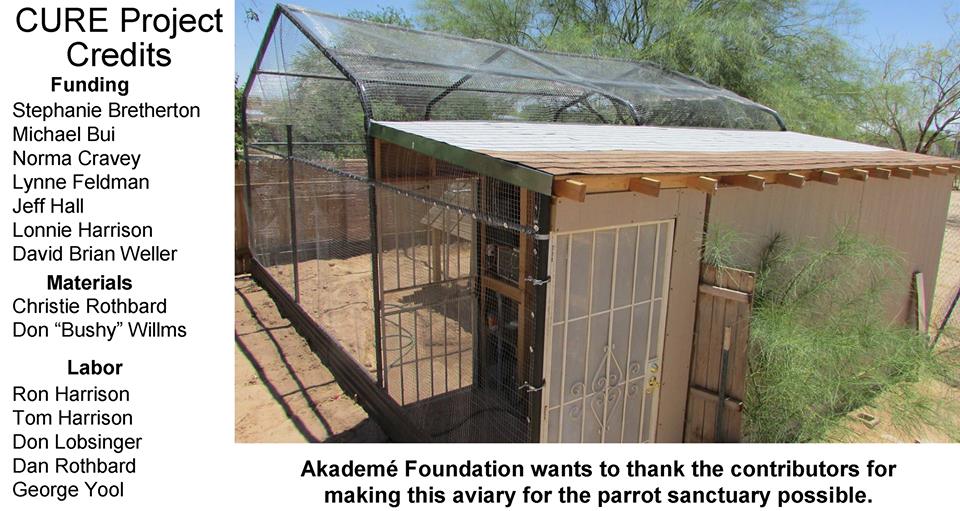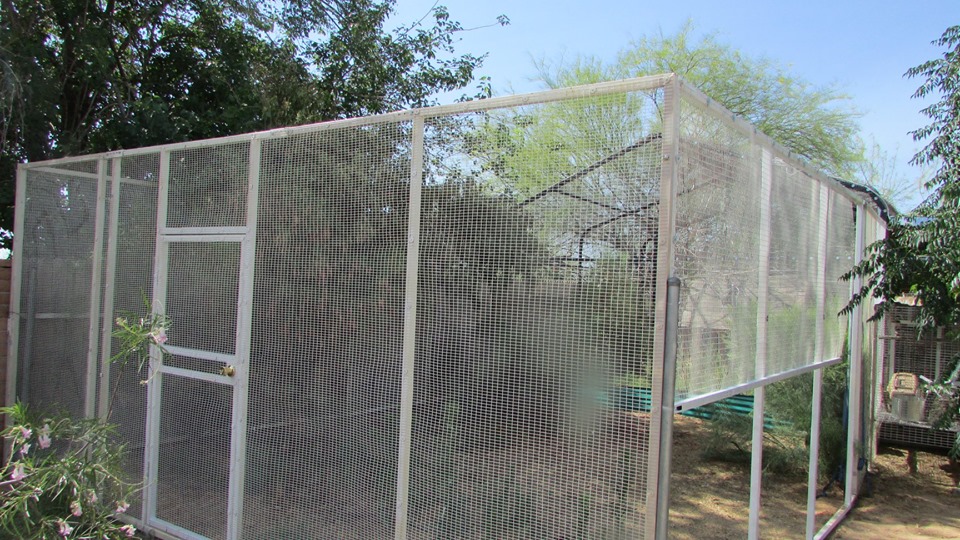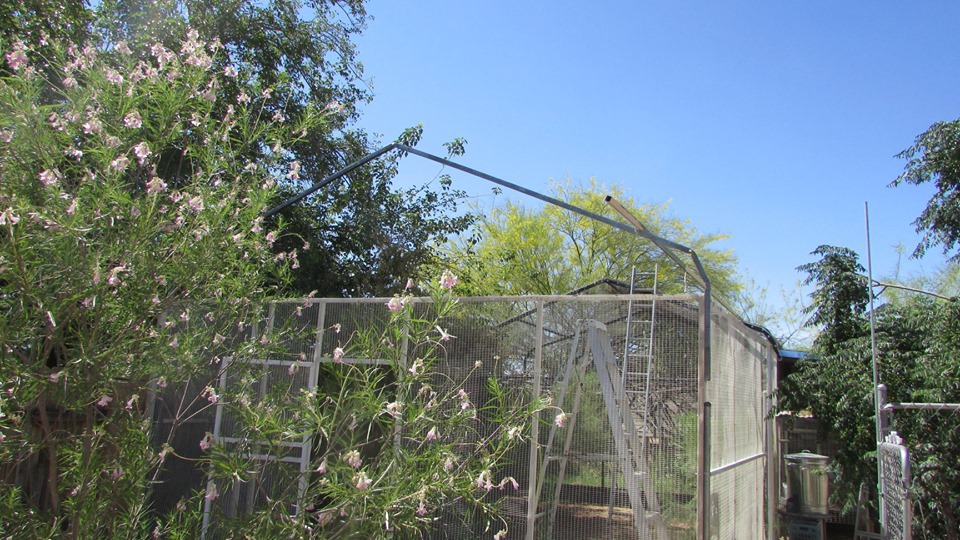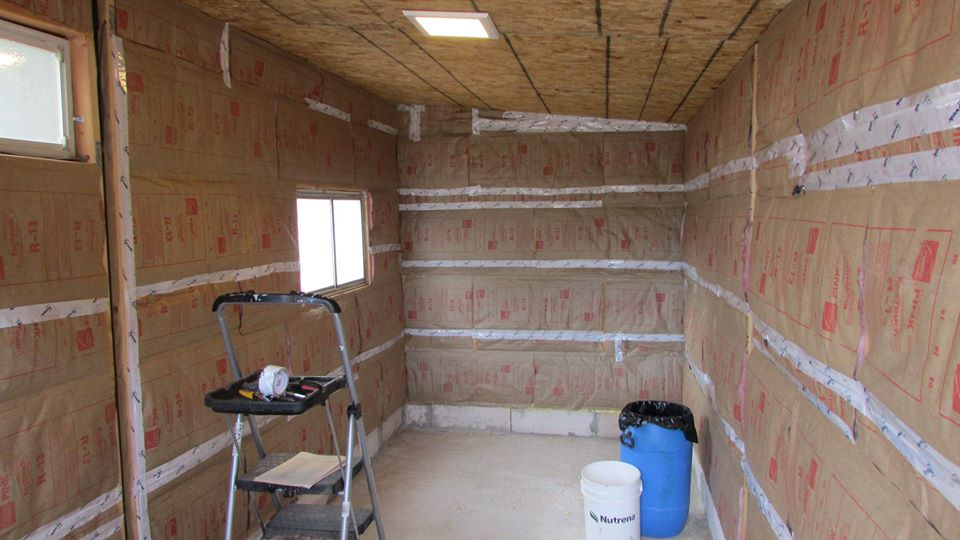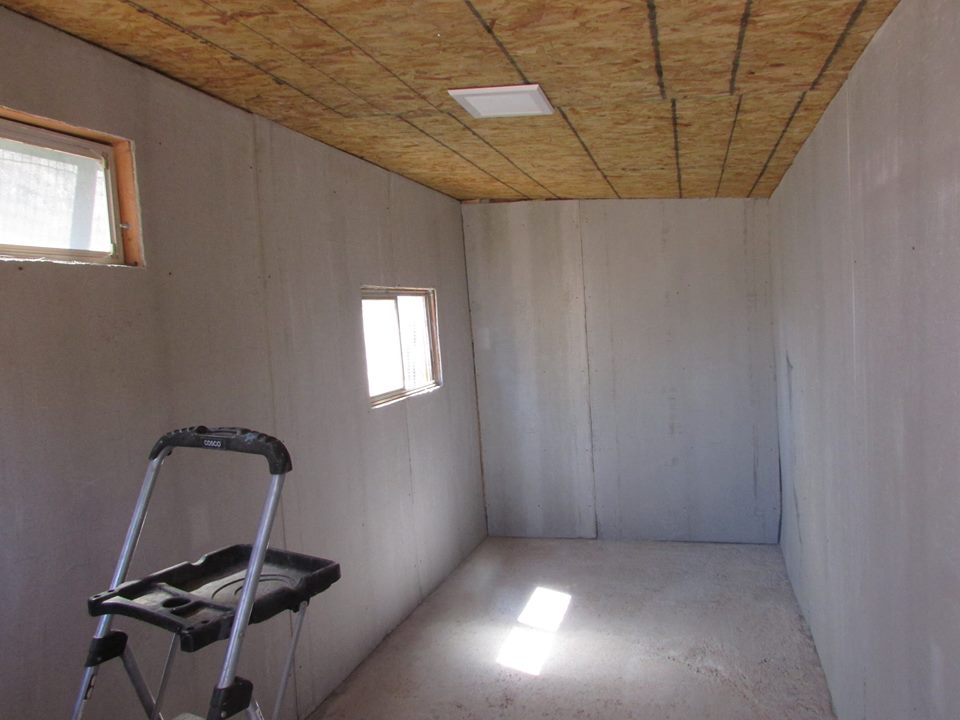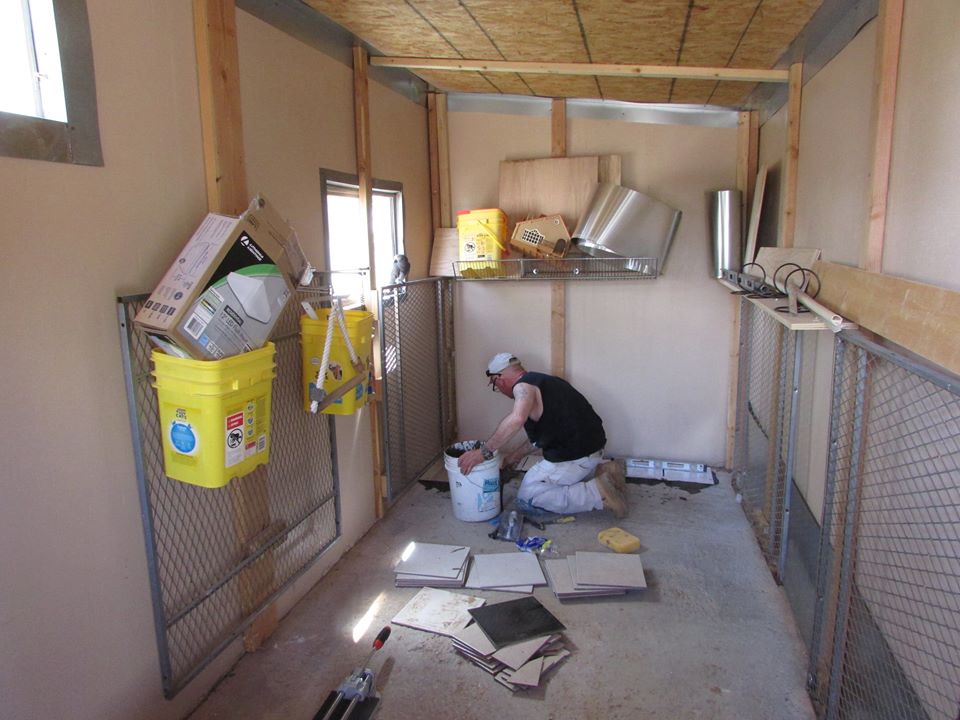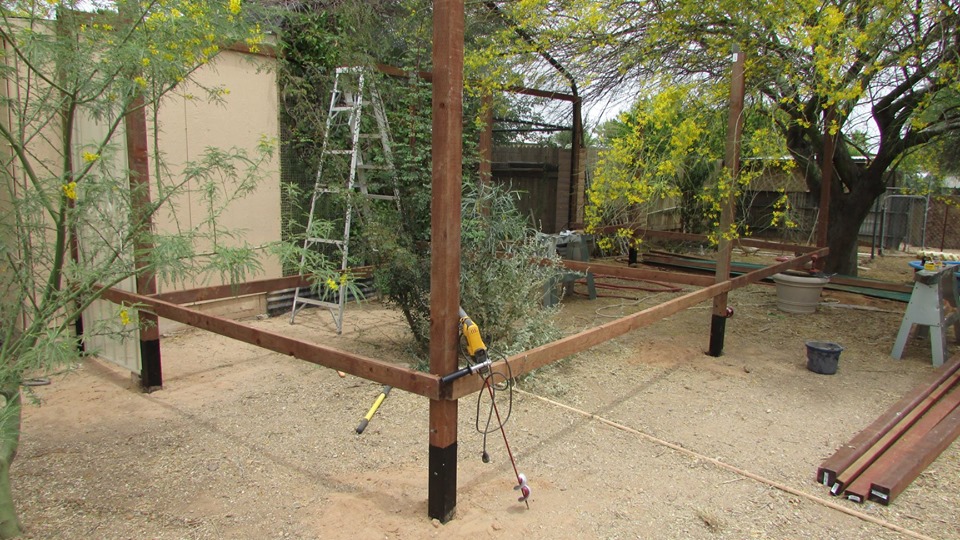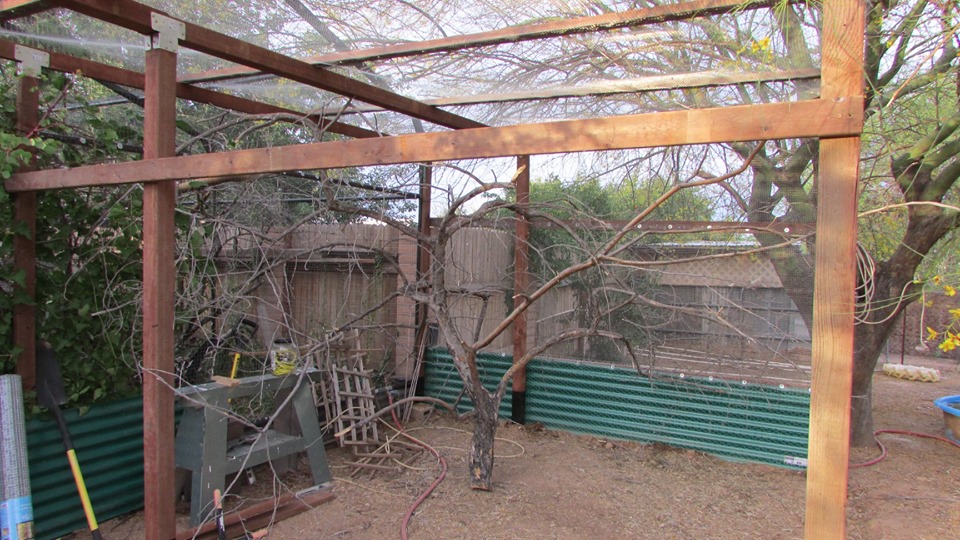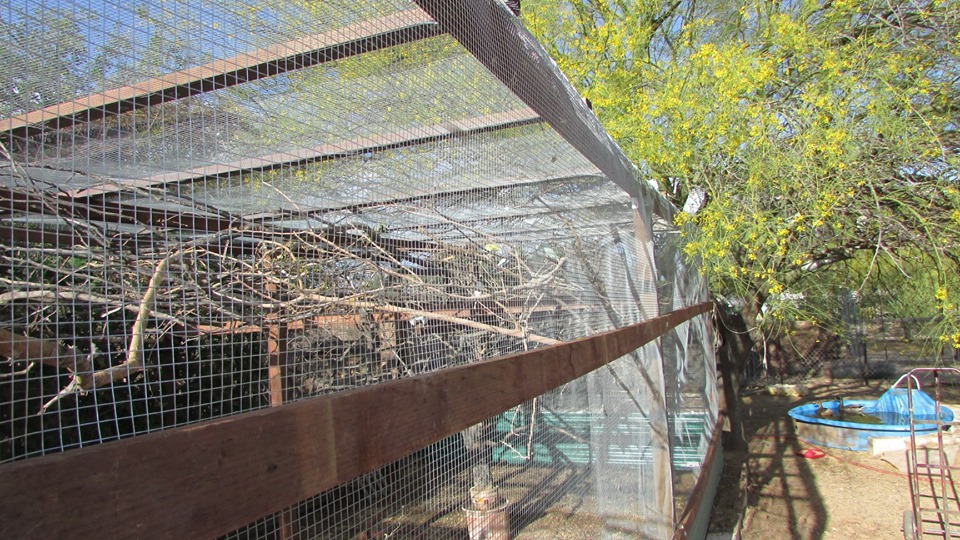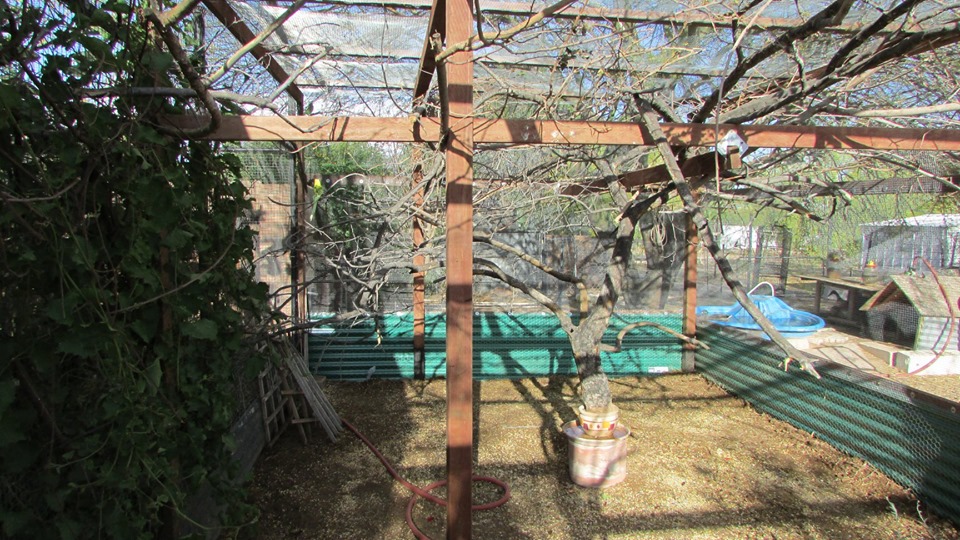The entire aviary was first dug out with a tractor. The posts (actually steel plumbing pipe) were then painted, positioned, attached to the roof modulars, uprighted, leveled and cemented. Currogated sheet metal was set around the perimeter, chicken wire placed along the botom and buried about 2' deep.
Meshing the roof was a nightmare because we used 6'x100' rolls, we mounted to the top, and the roof frame is too widely spread to be load bearing. The walls and south perimeter were done last so we could drive a truck in and out. and before the wall was added, we installed the gazebo with pond. Cheyenne is seen supervising from the young Tina fig tree she would come to love. She died of a heart attack July 12, 2019. Henrietta is already living here.
The gazebo is simple 4x4 pillars with metal frame and an old fencing panel cut in half to form the roof. The weight of the slate with fountain eventually caused a crack in the pond repaired two years later. The slate split during repair. Combined with a block for support in the middle, the split improved water flow.
The panels are lag bolted together and attached to cemented fence posts: 2 on the original aviary, 3 along the duck pen fence line, and one added in the exposed middle (west wall). The east wall is against the block pillars and footing of the wood fence. The front additionally has block partially burried, and west has currogated to block intruders.
Mesh burial did not stop prairie dog entry, so we didn't bother here. An African sumac was removed and set aside to be used for perches later. After construction we saw the spiral bean bushes were too invassive and removed them.
The original aviary had prefabricated modulars to give the roof its shape. We used a sledgehammer to initiate the bends on 1-1/2" steel tubing, then leverage to replicate those bends. Of course we painted all the new metal as we installed it. Each is attached by lag bolts to the outside of one side and the inside of the other.
Taking a cue from the budgie aviary, we used 4' wide PVC coated mesh attached from the inside to the frame on the outside. It was still hard-going because of the scale and height, but easier with helpers. The panels and roof all have 1-1/2" steel frame. The panels are welded. The roof is bolted.
When we went to transfer the face, we realized we were better off adding to the frame and using the new mesh. One entire side was opened and replaced by a 4' chaing link fence with gate for a variety of possible funcitons.
The hen house is a proper building with degrees of overkill. We started with the idea of doing a block wall, but our block wasn't load bearing. We switched to a semi-conventional wood frame attached to the 2" steel pipe framing. The insulation wells are horizontal and significantly shorter than a standard wood frame.
The outer walls are exterior wood paneling, repaired with sheet metal where they are compromised by ambitious parrots. The interior walls are 1/2x4x8 cement sheets, painted, joined, and then the joints covered by boards we then mount toys and perches to. The bottom 2' and all the corners are covered with sheet metal to prevent parrot damage.
We assumed at least occasional pressure washing, so the floor is tiled to help with water flow. Pressure washing risks mold and mildew, so we seldom do it. Instead, as with inside perches and dishes, we are cautious about stacking so waste goes to the floor instead of a lower level.
Behind the camera in each picture is the door and utility wall where the AC and TV are mounted. The electrical and water are managed from the sally port. Only food, perches, toys, and sheets for covering the floor are stored in the hen house. Everything else is stored or managed in the sally port.
